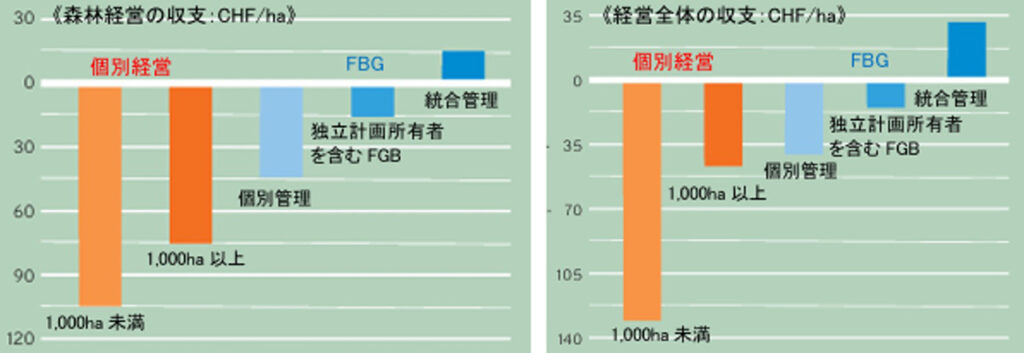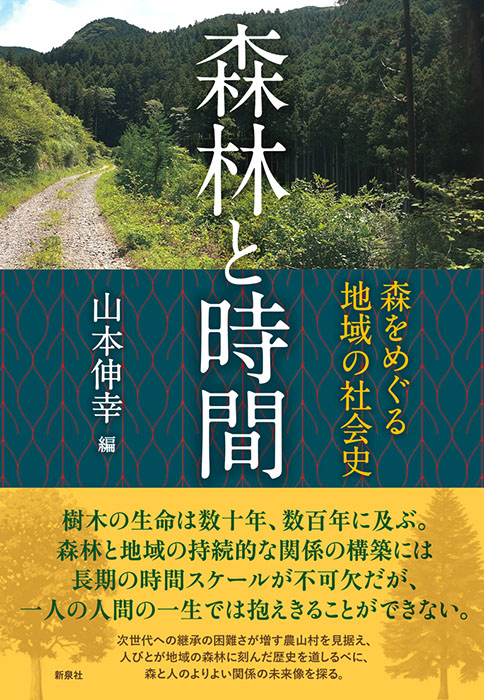Learning from Switzerland about sustainable forest management and institutional design: Integrated management of public forests to create forests circulation
Updated by Kazuto Shiga on October 14, 2025, 4:55 PM JST
Kazuhito SHIGA
(Forestry Economic Research Institute
After serving as Director and Fellow Researcher of the Forestry Economic Research Institute / Deputy Director of the Guidance and Audit Department of the Japan Forestry Federation, he became Associate Professor of Agriculture and Forestry at the University of Tsukuba in 2000, and Professor and Dean of the Faculty of Agriculture and Forestry at the Faculty of Life and Environment. He specializes in forest community organization theory, regional forest management theory, and Swiss forestry and forest policy theory. His publications include "Long-Term Sustainability of Community Forest Management: Future Perspectives from 100 Years in Europe and Japan," "Private Forest Issues in Contemporary Japan," "Public Control of Forest Management and Institutional Change: Public Forest Management and Regions in Switzerland and Japan," and "Forest Management Issues in Contemporary Japan. His current interests include public forest management theory and the history of forest management thought.
Why has the "circular forest economy" not been realized in Japan? I would like to discuss what issues can be found as an extension of Chapter 7, "Forest and Time," in which the author was in charge of writing the book, "Parties and Expertise in Forest Management. Since there may be various ways of understanding the "circular economy of forests," the Platinum Forest Industry Initiative's proposal, "...the forest industry is a key element of the circular economy of forests," should be considered.Utilization of forest resources more than four times the current levelBased on this premise, I would like to advocate that we take the lead in promoting management-oriented initiatives centered on publicly owned forests that have the conditions for sustainable forest management of forest cycles. This is a different prescription from the postwar forestry policy and the basic policy on forests and forestry, which regard the micro-ownership of Japan's forests, low labor productivity, and inadequate distribution and processing systems as the main impediments.
The level of cyclical use of forest resources is 210 cubic meters/ha and 1.2 cubic meters/ha in Japan, compared to Switzerland's 350 cubic meters/ha of forest accumulation and 4 cubic meters/ha of timber production. Japan's modern forestry policy began in 1876, when it began classifying mountain forests as public/private domain and enacted the Swiss Federal Forest Police Act for the High Alpine Zone. However, the recycling of forest resources based on a rich diversity of tree species and age structure has been maintained on a stable basis, and since the 2010s, the integration of management has been promoted in response to the worsening balance of public forest management, and this has been successful (*Note 1).
To give an overview of the response since the mid-2010s in comparison with Switzerland, the Ministry of Agriculture, Forestry and Fisheries (MAFF) enacted the Forest Management and Control Law in 2018, granted a forest environment concession tax to municipalities, and began levying a forest environment tax in FY2024. As a result of the five years since the system was established, the FY2024 White Paper on Forest and Forestry states that as of the end of FY2023, 394 municipalities in 40 prefectures had established management concession accumulation plans covering 23,000 ha, and 8,370 ha of forest maintenance (municipal forest management projects) had been carried out in 294 municipalities.
The number of municipalities with municipal forests exceeding 1,000 ha as a result of the Heisei Era merger is estimated to be 524 in the 2020 Census, but only 23 municipalities produce more than 5,000 cubic meters of timber per year. 16 of the 23 municipalities are in Hokkaido, and 7 municipalities in the prefectures in the survey year due to main cutting of forest lands created by the division of forest lands. production in many cases (*Note 2).
The majority of municipal forests are managed on a fiduciary basis, and many municipalities do not have a clear understanding of the current status of their forest holdings, and many do not have the organizational structure and capacity to take the lead in promoting the cyclical use of forests. Prefectures have an average of 168 technical staff and manage 895,000 ha of owned forests and 265,000 ha of divested forests, with outstanding loans from the Forestry Public Corporation reaching 1.4 trillion yen in FY2007, and 94,000 ha of the Corporation's divested forests were incorporated into prefectural forests by the end of FY2024. In the 21 prefectures that have adopted prefectural forestry special accounts, dependence on general account transfers is increasing, and the majority of prefectures are discontinuing the renewal of the divided revenue contracts, raising concerns about the continuation of management by landowners after the return of the divided revenue forest land.
Public forests in Switzerland include federal, cantonal, municipal and gemeinde forests, as well as church, association and cooperative forests. In Switzerland, public forests account for 70% of the total forest area, and the average area owned by the public is small (267 ha.) Although the forest management balance deteriorated in the 2000s, the establishment of forest management associations (Forstbetriebsgemeinschaft, FBG) promoted management integration across ownership boundaries, and the index of federal statistics The average management area has been expanded to 1708 ha and annual timber production to 6,474 cubic meters.
As a result, the forest management balance improved from a 33% surplus ratio and a management balance of -89 CHF/ha in FY2012 to 59% and -2 CHF/ha in FY2022, covering 675,000 ha, or 85% of Switzerland's production forest area, under 640 management systems (*Note 3). (*Note 3) The Swiss forest management system is based on the premise of a continuous cyclical management system centered on public forests, and the annual balance of the entire management is monitored through a common accounting software (ForstBAR), which promotes the improvement of management and modernization of forest management. The management director (Betriebsleiter) is a state-qualified Förster who has been recruited from all over the country and is well established in the forest management and in the region, and is treated as a professional and trusted employee.

Forstbetrieb (forest management) in Switzerland covers operations that meet the following three criteria: ownership or disposal rights to the forest, a forest production area of 150-500 ha or more, and a non-consolidated or consolidated accounting unit. The annual income and expenditure of the entire operation, including the forest management division and the service and product sales division, are captured. A comparison of management income and expenditure by management type and scale shown in Figure 1 reveals the following differences from Japan.
<Management Concepts and Scale of Operations
The above Swiss definition of forest management and the monitoring of forest management income and expenditure are not limited to the difference between the cost of forestry and logging income per harvesting season or the business balance of individual thinning operations, as in Japan, but also include the annual income and expenditure of management units based on consecutive-year operations, and promote improvements in these areas. The federal government and the Swiss Forestry Federation recommend the establishment of an integrated management FGB of 4,000 to 6,000 ha, with municipal and civil gemeinde-owned forests at its core.
.
In Switzerland, a forest management scale of several thousand hectares is assumed, and "utilization of potential" such as economies of scale is expected. As shown in Figure 1, the effect of improving the balance of payments by expanding the scale of management in individual management is limited, and the effect of improving the balance of payments for the entire management including the service and product sales sectors by integrated management-type FGB is significant. In other words, as a management response to the recent expansion of uncertainty, the integration of management on a scale of several thousand hectares beyond the ownership unit, institutional support for forestry administration (provision of forest management district grants), and expansion of service and product sales businesses through promotion of regional cooperation beyond the municipal area have greatly contributed to management improvement. The essential difference between these management measures and Japan's measures to consolidate forest management and thinning operations is obvious without reiterating it here.
The discerning reader may have noticed that the level of cyclic use in Switzerland and Japan reflects these differences in forest management systems, and that academically, there is a significant divergence between German forestry management theory and the Japanese view of forestry management. Japan's 25.03 million hectares of forests are divided into 7.66 million hectares of state-owned forests, 3.01 million hectares of "public forests" (1.31 million hectares in 47 prefectures, 1.43 million hectares in 1537 municipalities, and 790,000 hectares in 1795 property districts), and 14.36 million hectares in private forests. Although "public forests" under this ownership category account for only 12% of the total forest area, according to the international standard for public forests mentioned above, about half of the forest area can be considered public forests, including groups, associations, temples, shrines, and common forests that originate from national forests and private forests in tribal areas.
In the next issue, I would like to point out the importance of (1) clarification of forest management units and managers, (2) monitoring of management results and annual income and expenditure of public forests and disclosure of information on improvement measures, (3) international standardization of forest management systems and policies and redefinition of forestry organization duties as priority issues for public forest management, and give examples of conditions and measures to establish forest management that can sustain forest circulation. The paper will also provide an example of the conditions for the establishment of sustainable forest management and the measures that should be taken. (Kazuto Shiga, Director and Fellow Researcher, Institute of Forestry Economics, Japan)
*Notes and References
(1) For forest management and forest policy in Switzerland until the mid-2010s, see Kazuto Shiga (2018), "Public control of forest management and institutional change: public forest management and regions in Switzerland and Japan," pp. 244-309.
(2) Shiga, Kazuto and Makoto Hayafune (2025), "Research on Public Forest Development in 2024: Management Organization and Forest Practices of Public Forests: Toward Cyclical Use of Municipal Forests," pp. 9-13, 21-25.
(3) Based on "Forest Management Indicators Survey: 2020-2022," Swiss Federal Forest Office, Forestry Federation, etc. (2024).

Forests and Time."
Edited by Nobuyuki Yamamoto, published by Shinsensha
The life of a tree can span decades or centuries. A long-term time scale is essential for building a sustainable relationship between forests and local communities, but it is not something that can be carried out in the lifetime of a single person. With an eye on farming and mountain villages, where it is becoming increasingly difficult to pass on the forests to the next generation, we will explore the future of a better relationship between forests and people, using the history that people have carved into the local forests as a guidepost.
<Table of Contents
Introduction: Forest Time and Human Time Nobuyuki Yamamoto
Chapter 1: People Who Encountered Yamazukuri Shimazaki Yoji and the Forest School Atsuro Miki
Chapter 2: Inheritance of Mountain Village Society and Women's Life Course: Women's Progress in 200 Years of a Mountain Village in Tochigi Prefecture Miho Yamamoto
Chapter 3: Life History of a Village and Its Residents Living with Mountains and Rivers Taro Takemoto, Shuhei Sato, Sho Matsumura
Chapter 4: Modernity and Forests in Hamadori, Fukushima Prefecture, Chapter 4: Nobuyuki Yamamoto
Chapter 5: The Interconnection between the Pulp and Paper Industry and Local Sustainability
Chapter 6: The Era of the Akai School: The Origin of Domestic Timber Supply Development in a Local University Yoichiro Okuyama
Chapter 7: Party and Expertise in Forest Management Changes in Forest Policy and Local Practices in Tenryu and Fuji Minami-Foothills Kazuto Shiga
End of Chapter Nobuyuki Yamamoto, Continuing to Re-weave the Relationship between Forests and People